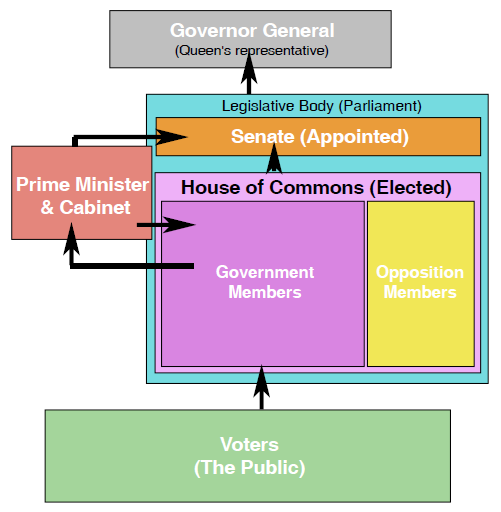The Parliament of Canada (French: Parlement du Canada) is the federal legislature of Canada. The Crown, along with two chambers: the Senate and the House of Commons, form the bicameral legislature.
The 343 members of the lower house, the House of Commons, are styled as Members of Parliament (MPs), and each elected to represent an electoral district. The 105 members of the upper house, the Senate, are styled senators and appointed by the Governor general on the advice of the prime minister. Collectively, MPs and senators are known as parliamentarians.1
Bills may originate in either the House of Commons or the Senate, however, bills involving raising or spending funds must originate in the House of Commons. By constitutional convention, and following the Westminster system of government, the House of Commons is dominant, with the Senate rarely opposing its will. The Crown provides royal assent to make bills into law.
The body consists of the King of Canada, represented by a viceroy, the governor general; an upper house, the Senate; and a lower house, the House of Commons. Each element has its own officers and organization. Each has a distinct role, but work in conjunction within the legislative process. This format was inherited from the United Kingdom and is a near-identical copy of the Parliament at Westminster
Footnotes
-
Parliament of Canada, Wikipedia ↩
-
Chart of Government Structure, Canada History Project ↩
